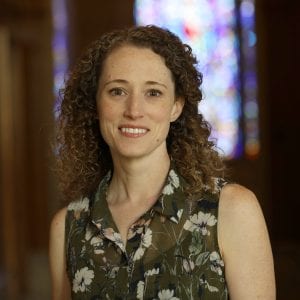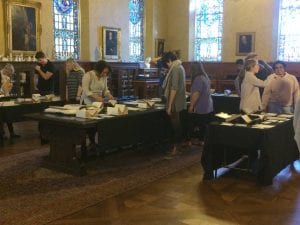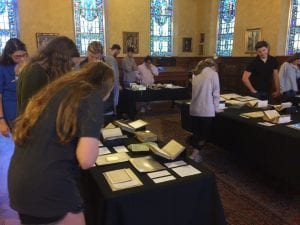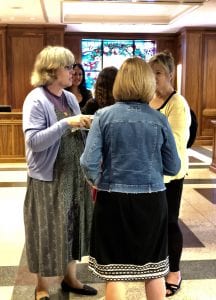We are pleased to welcome Laura J. French as associate librarian and curator of the Armstrong Browning Library. Laura joined the ABL in May, bringing with her significant experience in reference, instruction, and outreach. Before joining the ABL, she held positions as Special Collections and Digital Archives Librarian at California State University, Stanislaus; as Instruction and User Services Librarian, also at CSU, Stanislaus; and as Interim Librarian for Rare Books and Literary Manuscripts at the University of Maryland, College Park. Previously, Laura taught English and Social Sciences at the secondary level. Laura earned her BA in History with a minor in Literature from High Point University in North Carolina, and her MA in Medieval History from California State University, Sacramento. Laura completed all coursework toward an MA in Education with a concentration in Curriculum and Instruction and earned her MLS from the University of Maryland, College Park.
How did you become interested in librarianship?
I became interested in librarianship because of challenges I faced as a high school social science and English language arts teacher. I would search the internet for digital versions of primary sources that I could use in my classes. While I found many interesting digital collections, the content rarely aligned to content standards. If I could find digitized primary sources aligned to content standards, frequently the images were file sizes too small to create reproducible facsimiles and many could not be downloaded at all. So it was dissatisfaction with the then current state of many digital collections and a desire to help teachers interested in teaching with primary sources which prompted my interest in librarianship.
Describe your role at the Armstrong Browning Library and what interests you most about the position?

Laura French introduces students in Dr. Sebastian Langdell’s English 2301 course to the ABL’s 18th-century printings of Shakespeare’s “The Tempest”
As a curator at the Armstrong Browning Library I provide access to and promote the use of the library’s nineteenth-century research materials. I offer research support to individuals with questions about Robert Browning, Elizabeth Barrett Browning, and their circle. The part of my responsibilities which I find most engaging is the collaborative work I do with Baylor faculty designing instruction sessions utilizing the ABL’s resources to enhance student learning experiences. Attempting to increase awareness on campus, in the local community, and within scholarly circles of the ABL’s resources is the most creatively challenging aspect of my work.
Describe a project on which you are currently working and a project you hope to begin the near future?
Currently, I am working on an exhibit manual. This will be a tool for ABL employees and interns to offer guidance for individuals putting together an exhibit for the first time and reminders for those putting up their fiftieth. It will have some resources to help individuals curating an exhibit at the ABL keep track of the parts of an exhibit, locate supplies, and identify employees in other departments who have key roles in exhibit curation at Baylor Libraries.
Next, I will work on documentation for the ABL’s instruction program. I would like to be able to provide faculty with a description of the types of instruction that the ABL offers and ensure that all faculty are aware of their options when in comes to requesting instruction sessions utilizing the ABL’s research collections.





